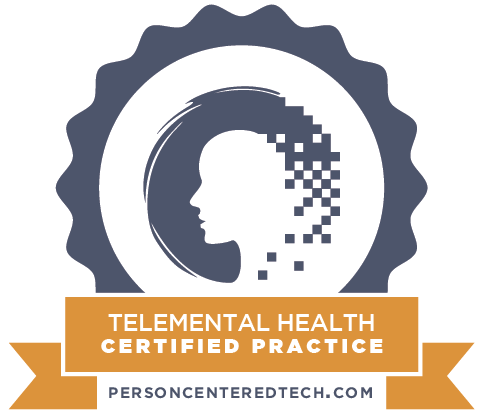Spirituality: Sobriety’s Peaceful Paradox
VELVET STEELE
Spirituality: Sobriety’s Peaceful Paradox
By KEN WELLS, LPC
Addiction is an invite to become spiritual. In the midst of chaos, denial and deception, there is this beckoning toward truth. The word spiritual is a conundrum. It is a paradox- an “unsettling contradiction”. Some describe spirituality as “trying to nail jelly to a tree”. Others suggest that it is about vulnerability. It can feel like being emotionally naked in front of another. It is about a certain kind of brokenness. Its truth can have a certain coldness and rawness to it. It can be bittersweet. Often, it is presented as sweet peace wrapped in discomfort, even in the presence of being exposed.
Ernst Kurtz, in the Spirituality of Imperfection, indicates that to be spiritual is not about religion and not about therapy. If not, then what the heck is it? He cites that it comes from the “wound” in life. Spirituality comes from our “torn-to-pieces-hood”. It’s in the pus of human failure and repeated destructive behavior. It can be likened to stretching out a tender and sore muscle that begs you to leave it alone. That which we would least like to embrace is the place we are invited to stand. Spirituality demands that I lean into the painful wound. Carl Jung is credited with “the only way out is through the pain”. It’s a contradiction that brings me/you to life as “being” and less about “doing”.
Addiction is painful. It hurts me and others in a profound way. It leaves human carnage in its path. Yet, in the presence of shattered living, spirituality utilizes the pain of addiction as a catalyst to bring us closer to what is real no matter how hard I try to deny it. It demands that I lean into the pain in order to heal. It means I have to scrub the wound. It all sounds so contradictory. I want to do the opposite. Yet, spirituality demands that I embrace the pain of betrayal, the agony of disclosure and the annoyance and inconvenience of consequences. This can include but not limited to incarceration, losses of all types, and the painful tedium of ongoing assessments. It demands the engagement of mistrust of others toward you because of your destructive behavior. It requires that I surrender to the reality that each day I am a beginner in spirit lest I settle into resentment, bitterness and defensiveness toward those who don’t trust me.
Spirituality silently and irrepressibly tells us that we are not in control. Its message can be sweet but only if we embrace what feels bitter.
To myself I will say … “Nah, Nah,Nah”— “I want something better”- “enough is enough!” “I will ignore surrender and force my way to a better place!”- From this space, spirituality takes on a different face. It can even bite back or so it seems. It is not a separate entity trying to break individual stubbornness. Rather, it is the other side of who we are that confronts the resistance and refusal to recognize the limitations of the wounded-ness that comes with addiction.
Spirituality is not about having the answer. It is not fenced in by words. It’s about “am-ness”. Kurtz expressed “it is about a way that we “be”. It’s about emptying (kenosis) from all that we do to embrace simply what we may be. It stirs groundlessness and ongoing uncertainty. It is reality whether we choose isolation and destruction or positive life giving experience. To use a worn out phrase, “it is what it is”.
Metaphors, images and stories become the language of spiritual awareness. For this reason, nothing is more powerful in healing than the story of human brokenness. As the poet T.S. Eliot described “we shall not cease from exploration and the end of all our exploring will be to arrive where we started and know the place for the first time”. We share our stories of brokenness again and again so that spiritually we shall know the place for the first time.
Ken Wells is a PCS staff therapist, lecturer, and author of The Clarification Packet. He facilitates Men’s Leadership Weekends held throughout the year. He can be reached at pcs@pcsintensive.com for additional information.
Cristine Toel, MA, LAC, S-PSB PCS Staff Therapist and Psychodrama Trainee at the Arizona Psychodrama Institute
The American Society of Group Psychotherapy and Psychodrama (ASGPP) held their 74th Annual Conference (“Desert Oasis: Healing the Spirit Within”) at the Phoenix Sheraton Crescent this past weekend. PCS had a strong presence at the conference and was acknowledged for continuing to use Psychodrama in our intensive program. We hold psychodrama group on Monday and Wednesday evening led by two wonderful directors, Soozi Bolte and Grayce Gusmano. I’ve had the privilege of working with both of them and they are generous and supportive mentors. My trainer from the Arizona Psychodrama Institute, Marlo Archer, did a great job co-chairing the event. I’ve never seen such a calm, positive presence in the midst of so much movement!
I started the conference on Friday, and walked into a ballroom filled with national and international participants moving to the music of Tony Redhouse, a Native American Sound Healer, Spiritual Teacher, and recording artist. The group then shifted to a life-sized sociometric choice where participants could walk the room and land on a topic they’d like to work on. I found myself at a sign that involved feeling stuck in a role and wanting change. From there we followed our group leaders from the Hudson Valley Psychodrama Institute, Regina Sewell, PhD, LMHC, PCC, and Jennifer Salimbene, CASAC, LSCW-R, PAT, to a separate ballroom. They referred to themselves as “Reggie” and “Jen” and their dynamic was inspiring. I’ve never played the Protagonist in Psychodrama before (probably because this is only the second time I’ve ever volunteered), but I wanted to explore my role as mom and was chosen by the group to do that. Reggie and Jen asked me to pick one of them to direct the psychodrama, but I really wanted the two of them to work together, and they agreed. From that experience I discovered the following to be true: Psychodrama does get at things in a different, deeper way, if you don’t make a move you will stay stuck, and Brene Brown is right about connecting through our vulnerability. I met some wonderful people Friday morning and that carried through the rest of the weekend.
Some highlights from the weekend for me included seeing Dr. Meg Givnish’s Problem-Solving Theater Troupe (Palm Beach, FL); a group that uses theatrical improvisation in combination with psychodrama. Her troupe chose the “problem” from a hat, assigned themselves roles, and played out the drama with humor and truth, while Meg directed, and the audience participated. I also loved Katrena Hart, LPCS, CBT, ATA, CETT, TEP, from Texas, who chose the theme of the “Big, Bad Wolf,” to illustrated what she referred to as the “Satten Slide,” based on the work of West Coast mentors, Dorothy and Mort Satten. The technique involved role reversal, which helps the client express the perspective of the person who possesses the title of “Big, Bad Wolf.” The illustration of that technique was powerful and showed the group the language we all share is emotion. On Sunday afternoon the group was pretty tired but we spent our last session working on the Canon of Creativity with Deborah Shaddy, LCPC, who is involved with psychodrama in both Kansas and New York. After she explained the concept we worked as a group to build it in the center of the room. From there the Canon provided a resource for all of us to explore where we were at in our lives (warming up, spontaneity, creativity, or the cultural conserve). The exercise provided a recognition that being hard on yourself is a direct detractor to spontaneity and creativity. So yes, I’ll keep working on that!
Thank you PCS for participating in this awesome event!
Eye Movement Desensitization and Reprocessing (EMDR) is a psychotherapy treatment modality that alleviates distress associated with traumatic memories. When disturbing events occur, the memory seems to get locked in the nervous system with the original picture, sounds, thoughts, and feelings. EMDR seems to unlock the nervous system and allows the brain to process the experience to a more adaptive resolution. After successful treatment with EMDR, affective distress is relieved, negative beliefs are changed to more positive ones and physiological arousal is reduced.
Effective psychological treatments do exist (APA, 1993; Roth & Fonegy, 1995). That’s the good news! Some of the treatments are known as cognitive behavioral therapy (CBT) exposure therapy techniques. CBT is based on a five-part model which suggests that thoughts, behaviors, feelings, physiology, and environment are all connected. Shifting one of these factors can alter the rest of one’s experience. CBT techniques typically focus on a person’s thoughts and behaviors and work to help people shift these factors in an effort to support change. All therapists at PCS use these techniques; several have advanced CBT training to treat such disorders as phobias, panic disorder, generalized anxiety disorder, OCD, PTSD, trichotillomania, and depression. Learning to recognize problematic thoughts and behaviors is also an effective tool for individuals who consistently struggle with ineffective problem-solving, poor interpersonal relationships, and finding a place of belonging in the world. If you deal with any of these daily challenges, call PCS for help.

 (480) 947-5739
(480) 947-5739 info@pcsintensive.com
info@pcsintensive.com












